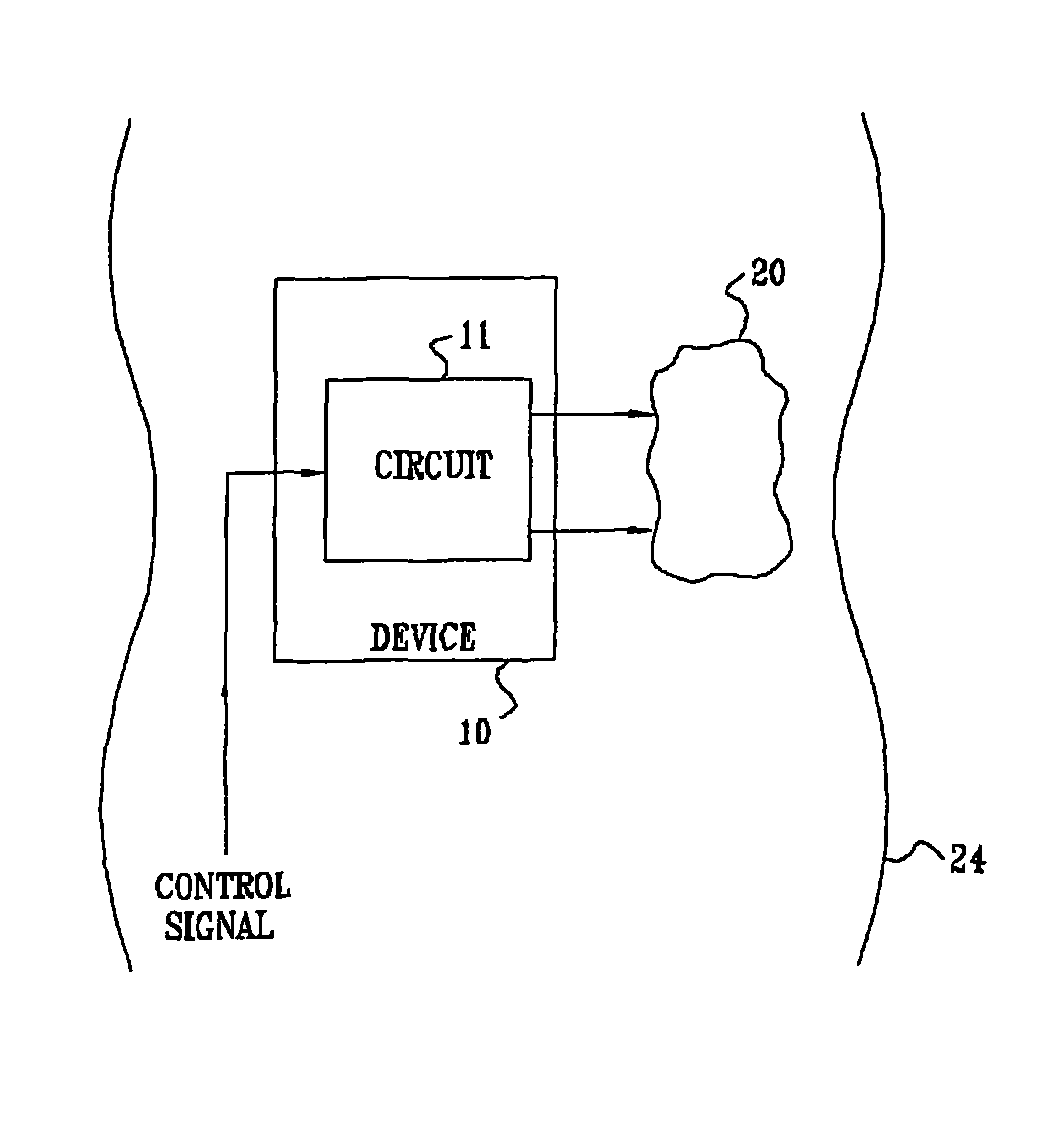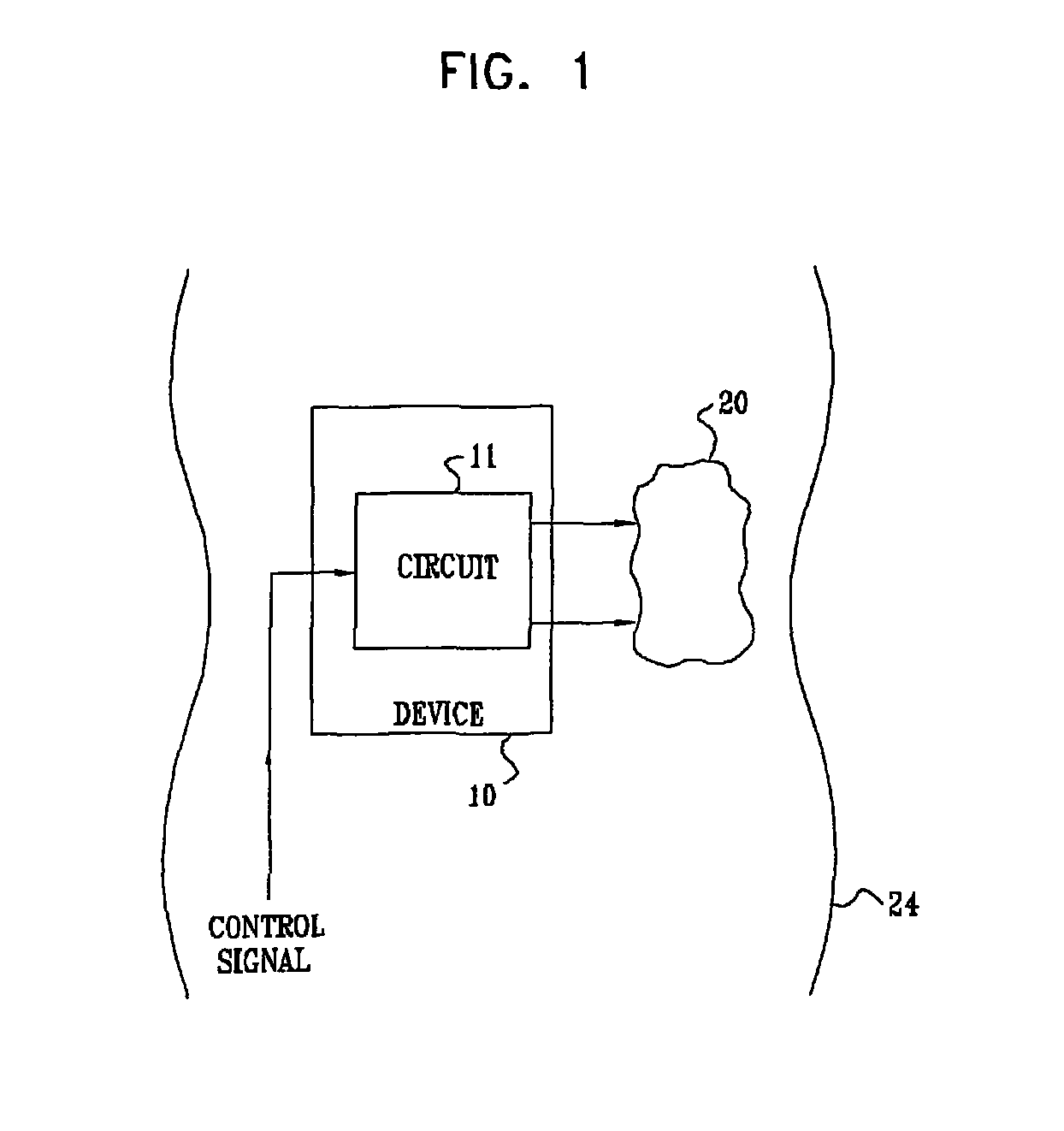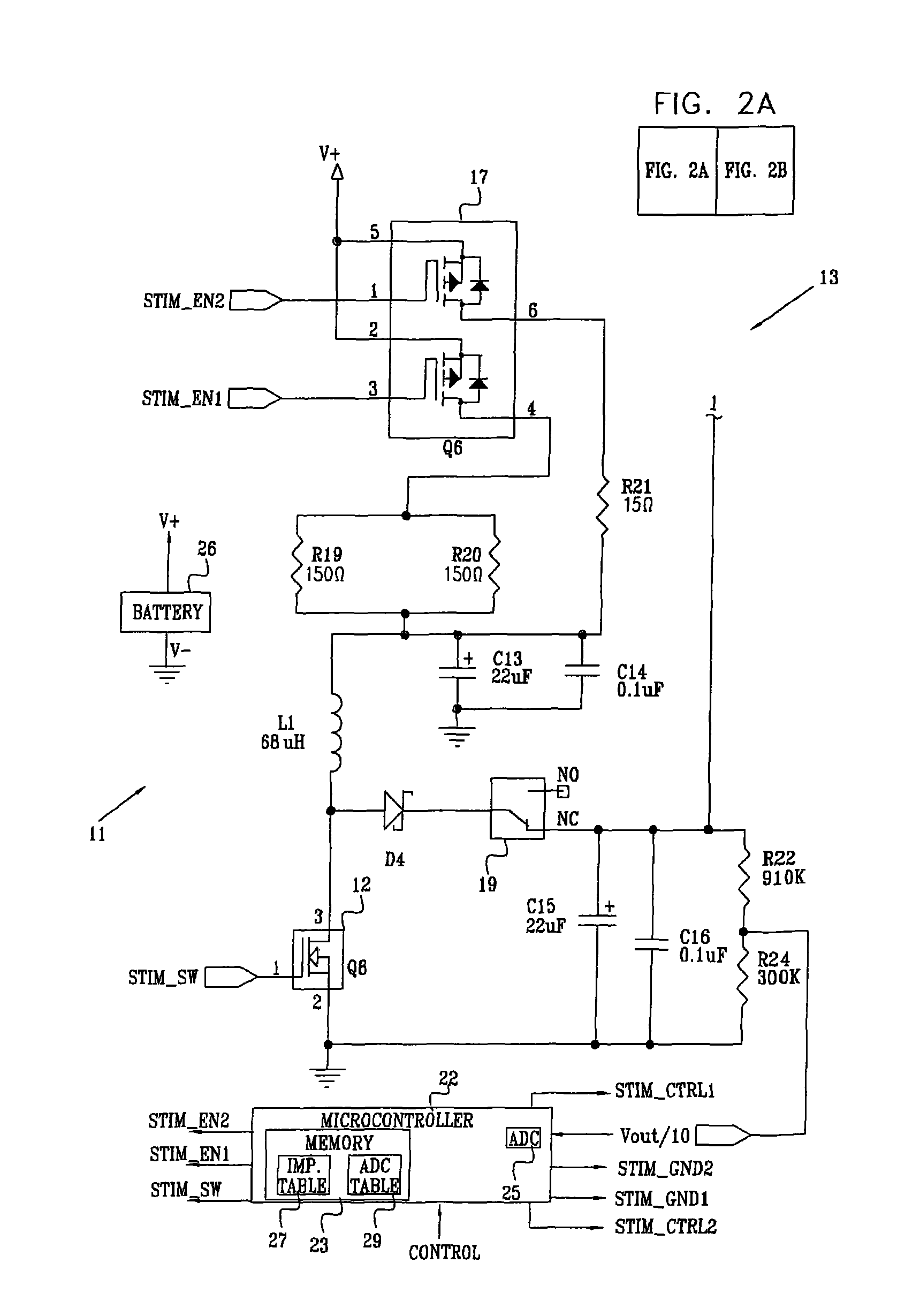Efficient dynamic stimulation in an implanted device
a dynamic stimulation and implanted device technology, applied in the field of pulse generators, to achieve the effects of reducing the energy dissipation of batteries, reducing the electrolysis effect at the electrodes, and saving energy
- Summary
- Abstract
- Description
- Claims
- Application Information
AI Technical Summary
Benefits of technology
Problems solved by technology
Method used
Image
Examples
Embodiment Construction
[0165]Reference is now made to FIG. 1, which is a schematic diagram illustrating a stimulation device 10, according to a preferred embodiment of the present invention. Device 10 comprises a circuit 11 which is used to generate electrical waveforms, the waveforms in turn stimulating tissue 20 of a subject 24. Preferably, tissue 20 comprises a muscle, most preferably a sphincter muscle, or a nerve of the subject, although it will be appreciated that tissue 20 may comprise any tissue of subject 24. Device 10 is preferably implanted in the subject, and after implantation and adjustment, is most preferably operated by a control signal generated by subject 24 and input to circuit 11. Circuit 11 may be implemented as discrete components, or as a custom-built component such as an application specific integrated circuit (ASIC), or as a combination of discrete and custom-built components. By way of example, the description hereinbelow applies when circuit 11 comprises discrete components.
[016...
PUM
 Login to View More
Login to View More Abstract
Description
Claims
Application Information
 Login to View More
Login to View More - R&D
- Intellectual Property
- Life Sciences
- Materials
- Tech Scout
- Unparalleled Data Quality
- Higher Quality Content
- 60% Fewer Hallucinations
Browse by: Latest US Patents, China's latest patents, Technical Efficacy Thesaurus, Application Domain, Technology Topic, Popular Technical Reports.
© 2025 PatSnap. All rights reserved.Legal|Privacy policy|Modern Slavery Act Transparency Statement|Sitemap|About US| Contact US: help@patsnap.com



